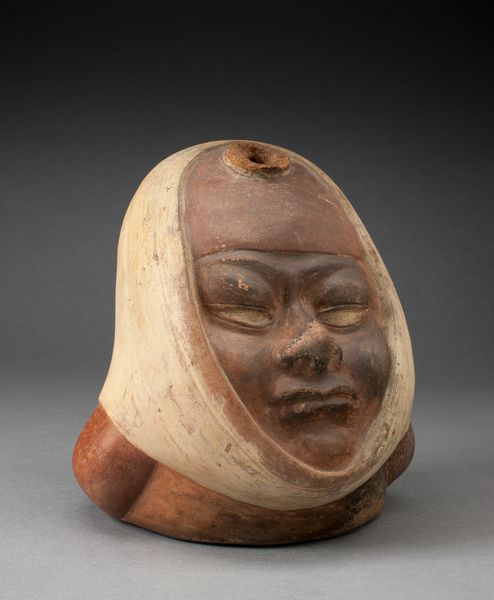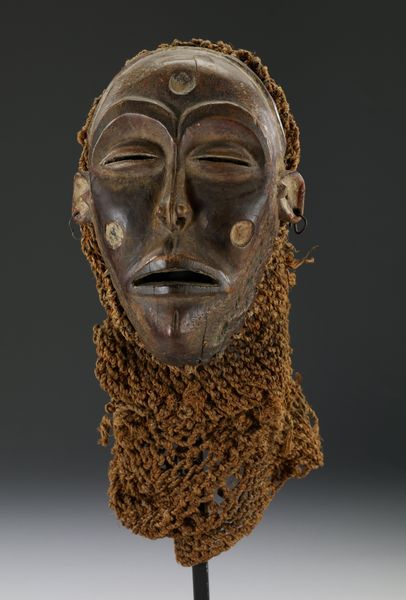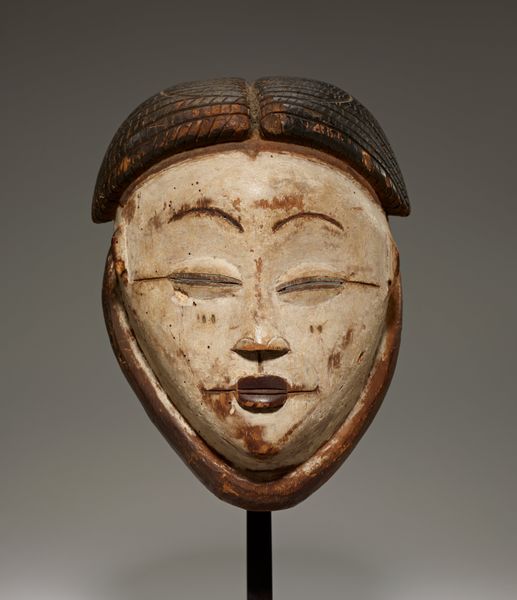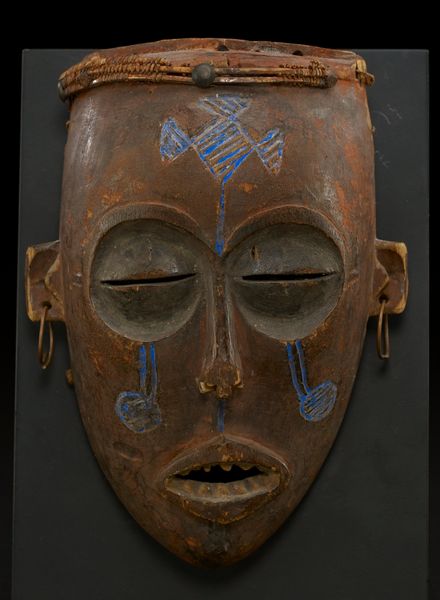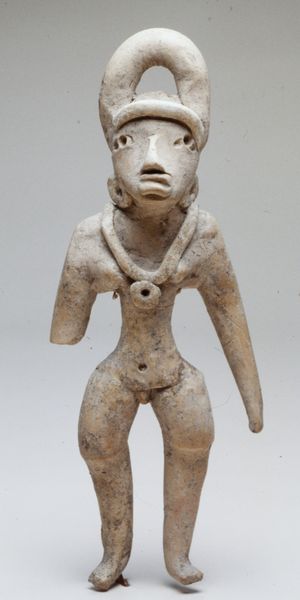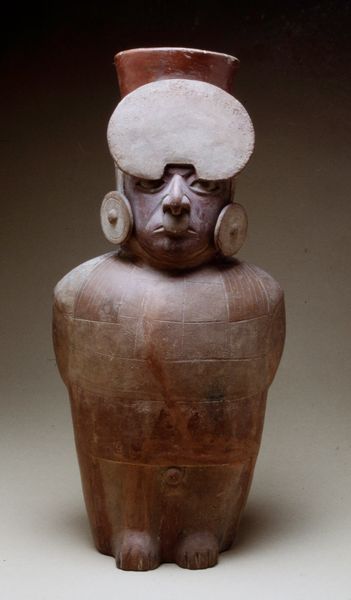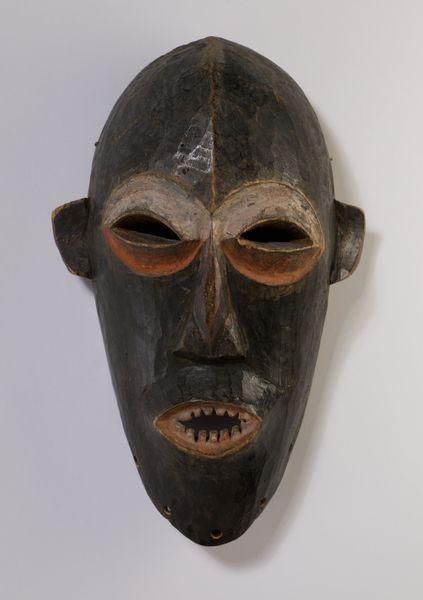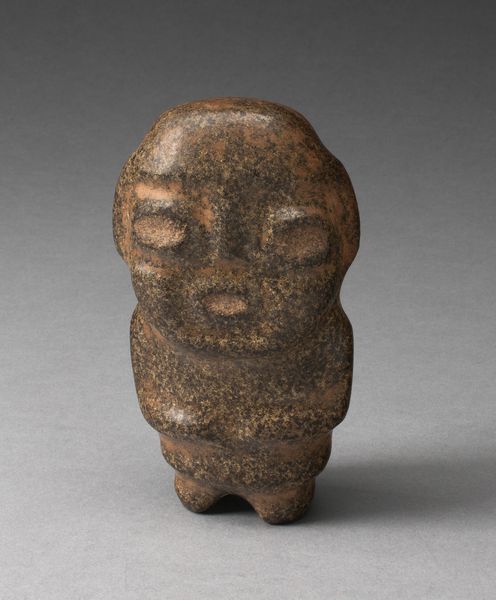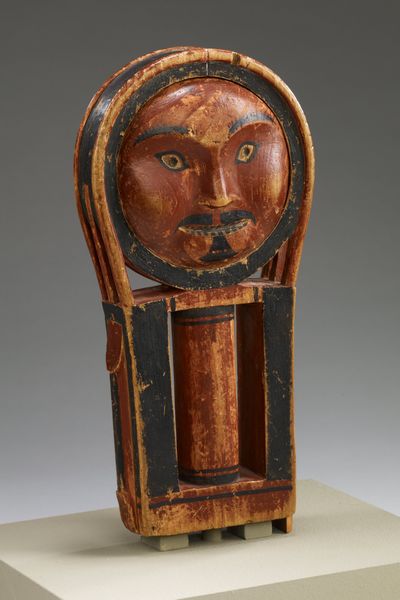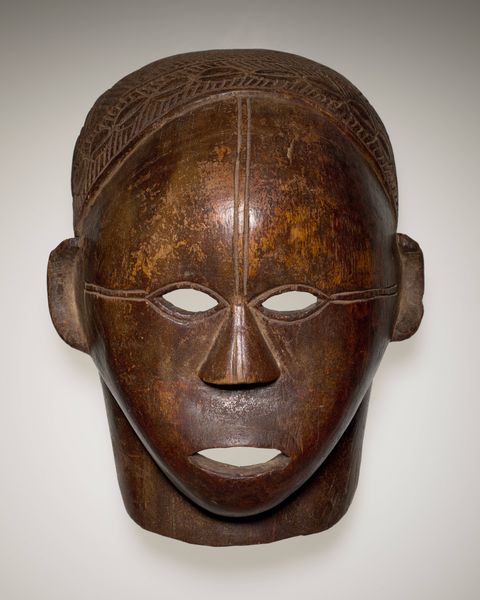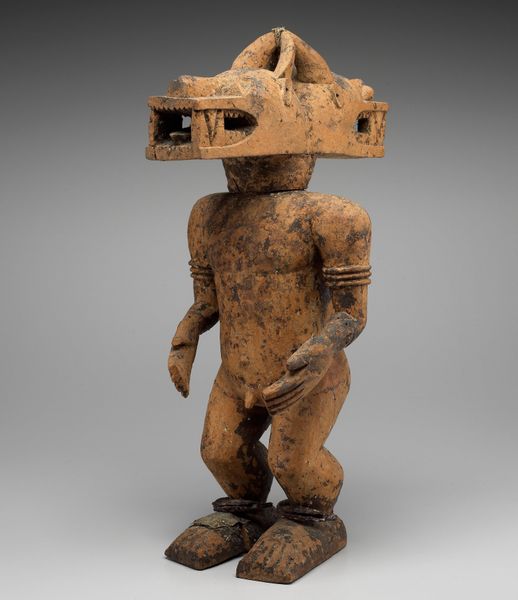
sculpture, wood
#
african-art
#
sculpture
#
figuration
#
form
#
sculpture
#
line
#
wood
Dimensions: 12 3/16 x 7 7/8 x 9 3/8 in. (31.0 x 20.0 x 23.8 cm)
Copyright: Public Domain
Curator: This is an Odumado Mask, attributed to the Igala people and crafted sometime in the 19th or 20th century. It resides here at the Minneapolis Institute of Art. Editor: My first thought is just how intensely crafted it appears, with those sharply etched lines running almost uniformly across the surface of what appears to be aged wood. It has an imposing, almost stoic presence. Curator: Indeed. And that crafted aspect speaks volumes about its significance. The Odumado masks, specifically, represent a key intersection in Igala society, functioning primarily as emblems of power for the community's Ekwo secret society. These weren't just decorations, they embodied legal authority. Editor: So the form dictates function. Are you thinking about the specific kind of wood, or the tools they may have been made with to carve something that symmetric? The skill involved to even create this, and thinking about labor needed... Curator: The materiality directly ties into the sociopolitical landscape. Local resources like the specific type of wood become integral to legitimizing local power structures, reflecting resource control. And we have to also recognize that the society, particularly within secret orders, reinforced male hierarchies in this control and ownership. Editor: Right, that plays a role. Even that sense of secrecy adds to the impact. Is there more detail about their use and performance? Curator: Certainly. They are only performed at night as they serve justice, and are closely associated with punishment. But it goes deeper still—it challenges imposed colonial notions of 'law' and 'order'. The Odumado represented an assertion of Igala legal tradition and governance in the face of colonial intrusion. Editor: Thinking through it all I get a better sense of what went into crafting it, what that carving meant socially as well as for any possible maker or workshop. Curator: Absolutely, examining the intersection of art, power, and social structures through this sculpture shows what role such pieces played within community life and legacy. Editor: Looking at this one and its place, both historically and today, it's really striking what we are talking about, what matters when thinking about labor and consumption as you were noting, not just aesthetics.
Comments
No comments
Be the first to comment and join the conversation on the ultimate creative platform.
